A Look At Gearing For Gravel- Part 1: by Grannygear
[adrotate group=”1″]
When I was building up my first gravel bike, the V2 Salsa Warbird, I was a bit perplexed on what gearing to run. Generally speaking, there are two types of gearing…road and MTB… and they are certainly not the same. The Warbird was obviously not a mountain bike yet it was not a road bike either. MTB set ups do not really play well with road shifters, chain lines, etc, anyway, so it was going to be road based, but how do I get this right? I had to take into account who I am (I’m not real fast but I am not terribly slow) and where I live (we got hills). Like tires, gearing is very specific to the situations you find yourself in. In fact, even more so. Tires are terrain ‘sensitive’ shall we say, but the tire that works well for my riding conditions works well whether I am in shape or not. Gearing is more complicated than that.
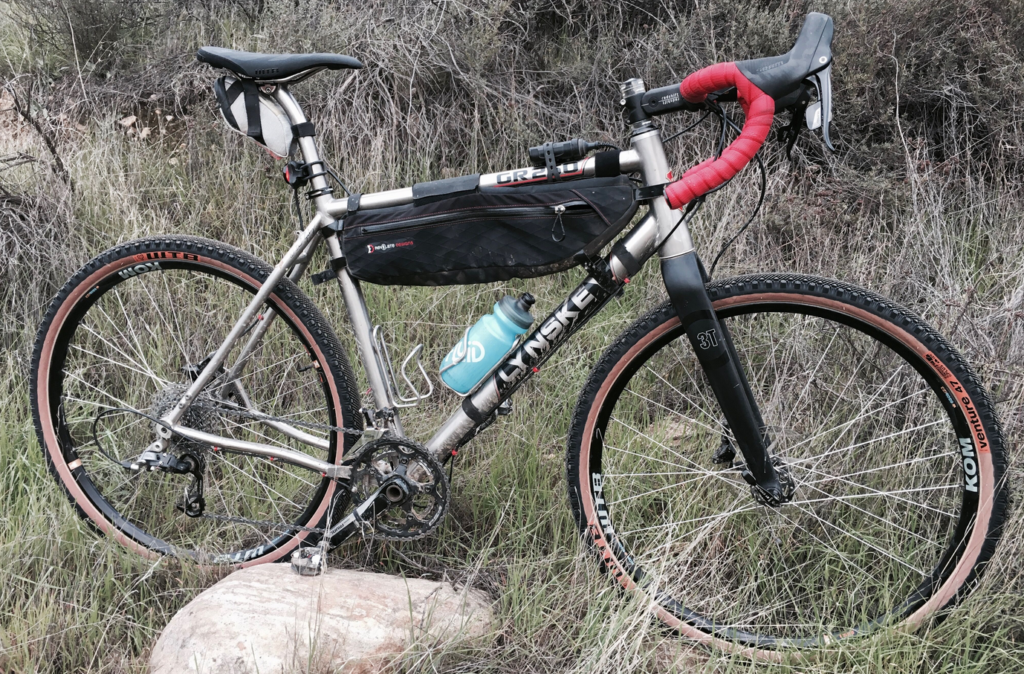
Some folks are bigger and heavier than others. Some are more fit. Some climb all day and some live where there are almost no mountains at all. Are you bikepacking with extra weight on the bike? Will there be a lot of open road miles? No single gearing combo is ‘right’ for everyone and everywhere. How low a gear do you need? How tall? 2x or 1x? If there are to be compromises, where should they be?
“It is”, as the King of Siam said on stage, “a puzzlement”.
I ended up stepping ‘out of the box’ with some custom gearing and I have been steppin’ that way ever since. Now, however, I find myself looking to evolve my gearing choices. What I am running at the present is not quite getting it done. This came into a sharp focus as I was facing a 3 mile long, 1800’ climb up a rocky, rutted, fire road, 35 miles into a 55 mile gravel ride. Yep. That hurt. I brought out the ultimate low gear that every cyclist has: Two feet, walking.
Now that was an extreme situation that is not typical of my rides, and I am not sure I want to build my gearing around that kind of climb, but there are ascents in the local hills that make me feel a bit over-geared. I also ride at elevation every now and then, like 7000’ and up but I do not LIVE at elevation. That hurts. Even a moderately steep grade is challenging in that thin air. Would I like ‘one more gear’ on those days? Yes, very much. But how to get it? And is that enough, that one more cog? It is not difficult to get a lower gear these days, but at what cost to overall riding performance? Should it be a smaller chain ring set or a bigger rear cassette? Both? And how much top end am I willing to shed in the process?
So I am going to ‘talk out loud’ a bit as I work through the decisions I have made and then embark on a journey towards meeting some new goals.
Come along if you like and see where this ends.
As I said, it began with that Warbird. I was used to running a compact crank on my road bike, that being a 50/34, a popular choice in Southern California for road riders. We have some pretty long climbs here. A typical, serious road ride will average 1000’ gained for every 10 miles ridden unless we keep it flat on purpose. My rear cassette at the time was an 11-28 (I am now on an 11-32). I knew that if I were going to be riding this gravel bike thing up any of the steeper fire roads we have, than I would need deeper gearing than my road bike has. 1x drive trains were happening on MTBs with the SRAM 1×11 systems with that 10-42 cassette. Road 1x was just being introduced, something I was pretty skeptical of…and still am. To me, a 2x system seemed proper for the widest range of gears and less gaps between cogs. It also was traditional in other ways I was more comfortable with and that might be a bit of a blinder for this old race horse. Staying 2x seemed to make sense, but 1x had it’s appeal.
“On the other hand…” Tevye, the Dairyman.
I was also aware that a 50/34 road compact crank would be a bit silly on a gravel bike, not due to the 34T ring, that might be okay, but because of that 50T big ring. I seldom spin out a 50/11 on my road bike so I sure was not going to do so on a gravel bike with a 40mm tire on there. So the typical compact road crank seemed wrong for gravel. At the back end, a 11-32 wide range road bike cassette was really not low enough even when matched to the 34T front small ring. So I would end up too tall on the high end with that 50T and not low enough on the low end with that 32T cog. Perfect….not! The Shimano 11-34 11spd cassette was not out then so that was not an option, and even if you added that in to 34T front ring, getting you to 1:1, there still is that 50T big ring overkill going on. In any case, I was using SRAM Rival 22, and if you look at the manufacturer’s ratings for the stock Rival 22 longer cage rear derailleur, you would see it topping out at a 32T cassette. Hmmmm.
Now, the thought of a cyclocross crank made a lot of sense to me regarding the top end of things. A ‘cross crank typically runs a 46/36 front ring combo. A 46/11 would be plenty tall enough. But that 36T small ring that is part of the deal on a ‘cross crank was going in the wrong direction to get a low enough gear. Drat.
So I ended up with the 50/34 crank and an 11-32 cassette just because I did not know what else to do. And it was like I expected. Too tall and yet not low enough, even though I was still enjoying the bike.
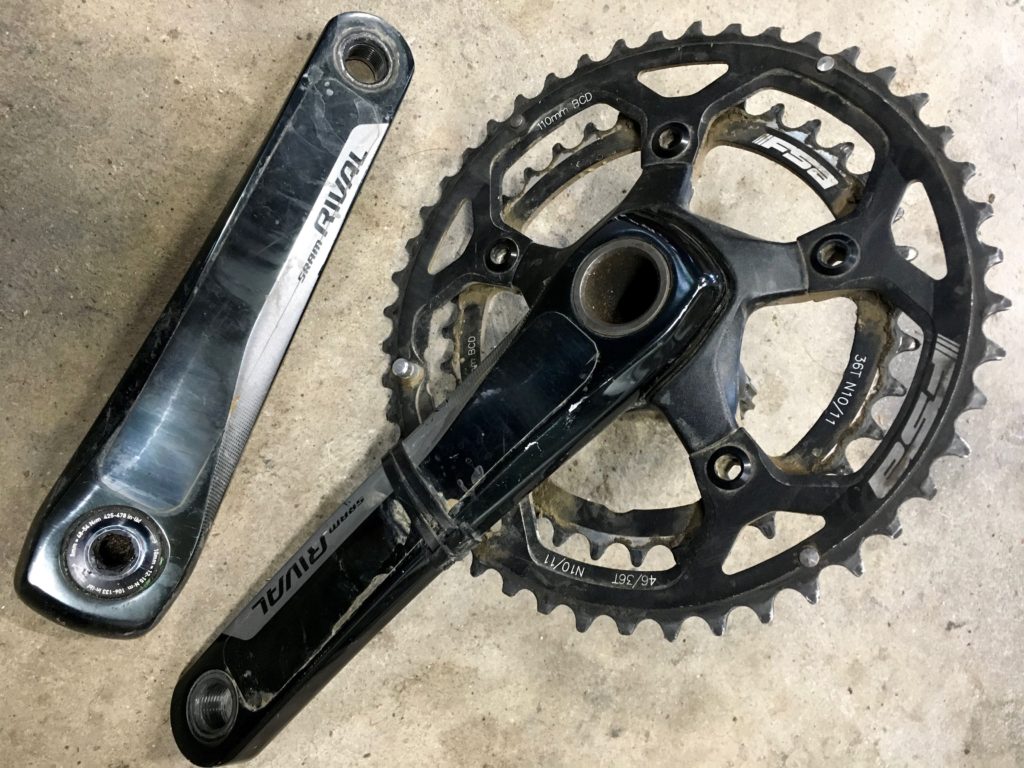
Now at some point I was running this by Guitar Ted and explaining my dilemma. He suggested I try thinking outside the box which immediately appealed to my tinkering nature. You see, I came from an era long before programmed shifting ramps and pins and special BCDs (Bolt Circle Diameters) that locked us into certain combos and because of that we could mix and match gears to fit. And while we have gained shifting performance that would make one weep if we had to go backwards 20 years, we also lost flexibility. Guitar Ted said he was running a ‘cross crank in a typical 46/36 set up but had fitted a SRAM 11-36 11spd cassette to his bike with a stock Shimano Ultegra mid cage road rear derailleur. He had found that it ran very well with only a slight tweak to the B tension screw on the derailleur. That combo had a lot of appeal. It solved the big ring issue and would give me a 1:1 low gear, something I hoped would be adequate.
So now I had a plan. I obtained a set of 46/36 chain rings and a SRAM PG-1170 11-36 11spd cassette. I found that I did not even have to change the chain length as the reduction in chain ring size allowed for the bigger cassette. Bonus! And with only a bit of massaging to the B tension screw, it shifted up and down the cassette very, very, well with the stock Rival 22 derailleur. I would say it was 95% as good as stock which was certainly good enough for me. On the trails, that 1:1 low was pretty nice and the top end was more than tall enough. As well, I found out how much better a close crank ratio is. With only a 10T step-up in tooth count from the small ring to the big ring and vice-versa, that awkward drop we have come to accept on the standard road compact crank just went away. And that 36T small ring was really good for keeping the chain well up into the middle of the cassette rather than drifting down to the bottom cogs as speeds came up. Conversely, the big ring was small enough to allow for staying in it longer than a 50T would. Me likey.
Out back, an 11-36 11spd cassette keeps the gaps between gears decently small as compared to a wider range set-up which is nice for the road and the more spinny-spinny rides.
And that is where I have left it for the last couple of years, transferring that set-up to the Lynskey. 46/36 crank…11-36 cassette…stock derailleur. But, it was not always low enough. It did not happen a lot of the time. I am pretty fit so I can manage a 1:1 gear up most of the climbs here and there, but sometimes I really, really, really, wanted one more gear. Just one. If the day was long enough and the trail steep enough, it could be a challenge that, while possible to achieve, was very inefficient at keeping the legs surviving for the next climb and the next, etc. On top of that, SRAM can’t build a good shifting road front derailleur to save themselves. No wonder they went to 1x. I have had SRAM road groups in three different levels on multiple bikes and none of them shifted the front rings anywhere near the level of even low line Shimano. Finicky, high effort, and inconsistent…pick all three. Which was odd because the old XX 10 spd MTB stuff shifted amazingly well. Who knows? So I would ride and ponder. How can I get a bit lower and also get it to shift better? How much lower is enough? I really did want to stay with 2x. Hard to beat that big ring when you are spinning down the road and I do a lot of road miles on the gravel bike connecting the dots.
So I decided to take this improvement process a bit at a time. First on the list was improved shifting Then I would see what a bit more ‘out of the box’ thinkering might get me with the 2x system.
I wanted to begin by replacing the SRAM chain with a Shimano one. I had heard that was a better shifting chain. I grabbed a simple 105 11spd chain with the quick link system and fitted it to the bike ‘as is’, changing nothing else. That was already better. Upshifts were more reliable but hardly what I would expect from a modern shifting system. Still, I was encouraged. Next?
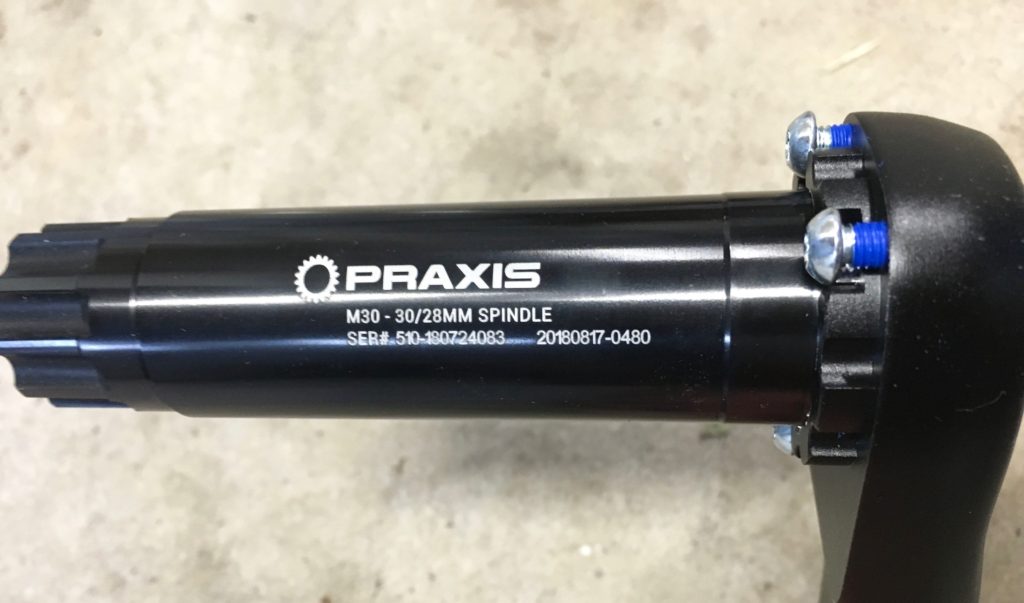
A better crank set: “Hello, Praxis?”
I had been using a set of inexpensive FSA chainrings after the SRAM ones wore out but there was not too much difference between the two sets in shifting quality anyway. I was pretty sure I could do better with some other rings on there but it is surprisingly costly just to replace chain rings. Sometimes you can buy a new crank set for just a little bit more money. And if I am going to change the rings, maybe I should just get on the phone and make a fresh start altogether as I bet the SRAM bottom bracket was about ready for retirement.
When you hear another person in the bike business compliment another company, and that specific compliment happens more than once, you can pretty much bet something is legit. That had happened regarding Praxis. Praxis is a small company that makes some very, very, cool parts. They have their own spin on how a crankset should be made and the 30mm aluminum spindle and forged chainrings keep things stiff and solid. While Shimano is the gold standard for front shifting quality for the masses, I have heard Praxis is a very close second. We shall see.
The Praxis Zayante M30 is their top of the line aluminum road crank. [ ] Above that is a Power Meter version and a carbon version. From the website:
Named after a famous redwood-covered road climb in Santa Cruz, our Zayante road crank represents a huge amount of technology in a “Comp” level package. The Zayante combines the benefits of a wide outboard bearing stance with a 30mm aluminum spindle. Add its beautifully sculpted hollow-forged alloy crank arms and you have a massive amount of stiffness and power transfer to flatten climbs. Praxis Works cold forged chainrings (included) and M30 bottom brackets (required and sold separately) round out the Zayante package for a super-efficient road crank with top notch Praxis shifting. The Zayante M30 can be installed in a BSA, BB86, 386EVO, BB30, PF30, T47, BBRight or older Specialized OSBB road frame.
- Hollow forged arms | Direct Mount 110BCD spider
- 165 / 170 / 172.5 / 175 lengths
- 46/36, 48/32, 50/34, 52/36 | 38T, 40T, 42T
- M30 Spindle | Requires Praxis M30 BB
- Works with 10/11sp chains
- Weight 712g +/- (172.5 with 50/34)
- Q-Factor 147mm
It is a pretty adaptable system and weight and stiffness are top notch for the cost. It also allows me to go 1x with that direct mount spider system and that is a bonus.
I weighed the old SRAM Rival 22 crank and rings and found I was knocking about 100g off bike weight with the swap. Nice! Installation of the Praxis bottom bracket was straightforward…gotta’ love threaded bottom bracket shells! With the Zayante all installed and torqued down, I checked the shifting in the work stand and found it to be very encouraging…sure and smooth.
Night and Day. East and West. Black and White.
What other opposites can I think of? To steal a line from Men In Black, ”Old and busted…New Hotness” or something like that. Out on the road the Praxis combo felt very smooth and ran quietly. Can I tell that it is stiffer or lighter over the old set-up? Well, not that I can swear to, but something is going on here because if feels very, very solid and smooth running. Shifting so far has been excellent, so much better that it almost seems silly that I put up with the old stuff for so long.
Now that I have a functioning baseline, I will be looking at options to go a few steps further towards my goals. Next time, let’s see what I can do with 2 chainrings and 11 cogs if I decide not to play by the rules.
NOTE: Praxis sent out the Zavante crank set for test and review at no charge. We were not paid, nor bribed for this review and we will strive to give our honest thoughts and opinions throughout.
_____________________________________________________________________________
About The Author: Grannygear hails from SoCal and spent most of his cycling days as a mountain biker from the formative years of mountain biking all the way up to the present day. His day job is in the tech sector, but he has spent time writing about off road 4X4’s, 29″ mountain bikes, and cycling in general. Grannygear and Guitar Ted have worked off and on together since 2009 after a chance meeting at Interbike. With gravel cycling on the rise, Grannygear has been exploring how this genre’ works in SoCal and now does guest pieces for RidingGravel.com in his spare time.
______________________________________________________________________________



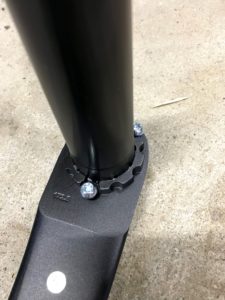
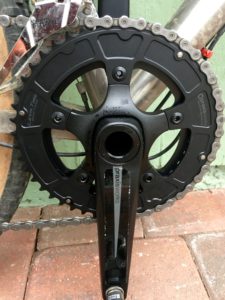
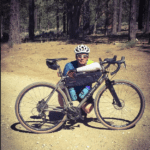
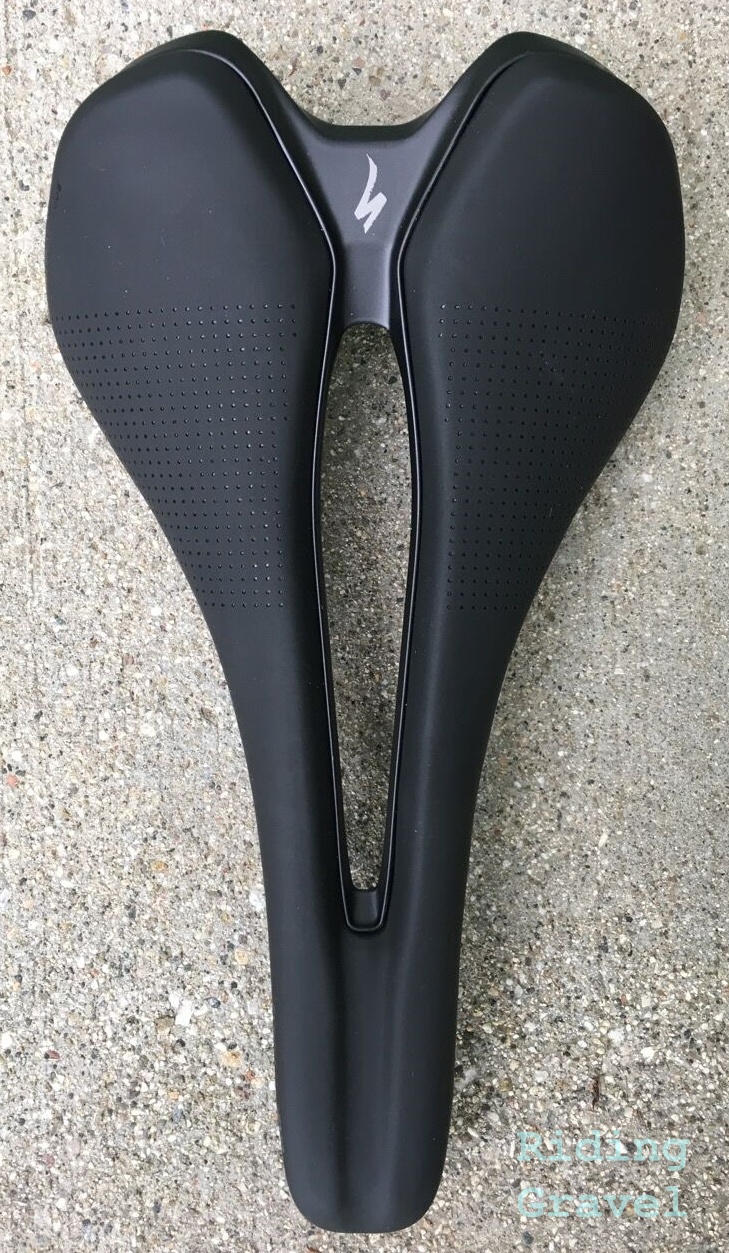
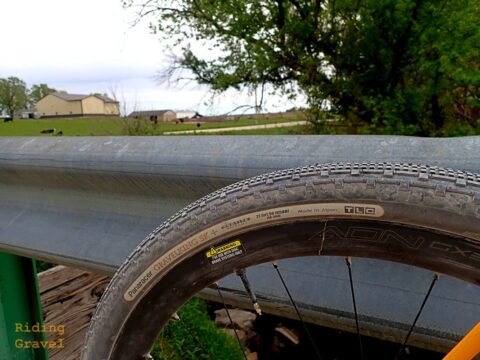
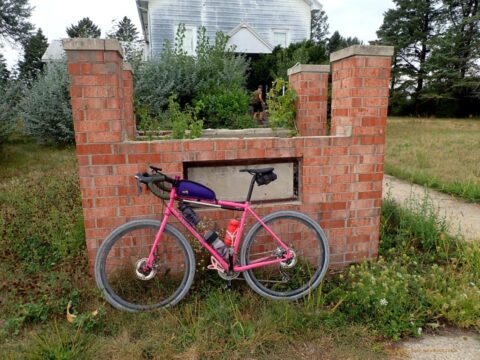
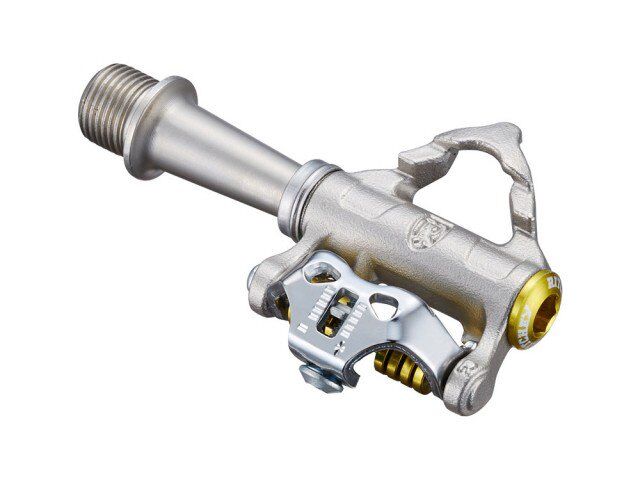

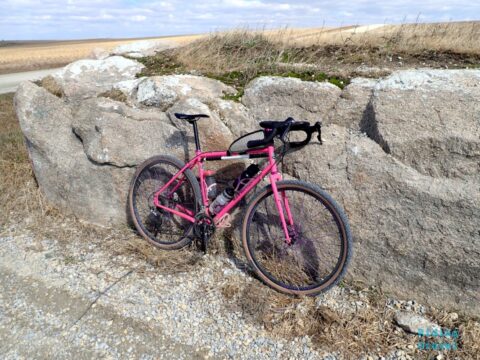
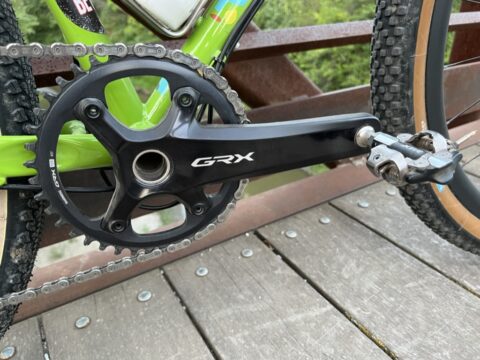
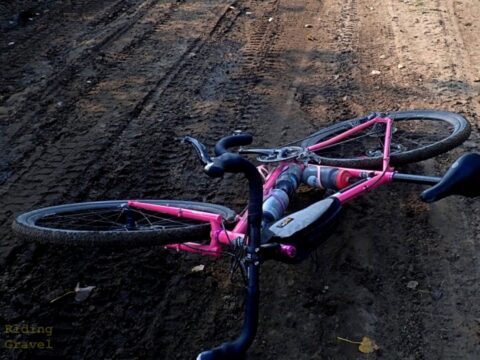

I run a Polar crank set with 46/34 up front and either an 11-36 or 11-40 cassette depending on the terrrain. I use a Lindarets Road Link (https://lindarets.com/roadlink) with a clutched Ultegra med-cage derailleur. This setup is as bullet proof as you can get when racing in muddy gritty conditions. The clutched derailleur is a relatively new addition, but I’ve completed three Hilly Billy Roubaixs on this set up (pre-clutched derailleur) with good results. Total of over 8,000 miles on that set up on this gravel bike. This is a dI2 bike, but it could be set up on a mechanical Ultegra bike just as well.
@Mark Bates…good to hear. Next post I do explore 2x options. One thing that bothers me with the Road Link is that is adds a somewhat fragile hangy-down aluminum part (Road Link) to an already somewhat fragile hangy-down aluminum part (hangar). Have you found that the mid-cage has enough capacity or do you run out of tension in the 34/bottom cogs combo?
I did not try the Road Link but I did dialogue with the Wolftooth folks about it. If I come back full circle on this, I might explore it.
gg
I bought my Cannondale Topstone 105 for a few reasons, but the fact it came with *sensible* gearing: 46/30 FSA crankset with 11-34 cassette, was a huge win.
Damn, I could have written this entire article. Not as well, but still.
Went from 50/34, 11-28 to 11-32, but still wanted “another gear”. Went to the Ultimate Black 46/30 with the 11-32, but found I missed the higher top end. New bike (Giant Revolt Advanced 0) came stock with 48/32, 11-34, which I am hoping will be the “Goldilocks” set up.
I’ve been going 1x with a 40/10-42 for commuting and heavy hills dirt roads and love it. I’m a mountain biker most of the time, so I don’t even know what you roadies are talking about when it comes to gear jumps, and since I don’t know any better, I’m perfectly fine with the gaps. Just makes me stomp a little harder sometimes, which suits me just fine since I have no spinning technique anyway. I’ll do anything to avoid shifting a front derailleur, and the sram 1x with the wide range cassette has been the answer to my dreams. The biggest gaps are in the big end of the cassette anyway, which is where I’m stomping, so I don’t mind the jumps. They are a relief most of the time when I need to drop a handful of gears quickly. Can’t ever see going back to 1x unless I get hit by the roadie stick and decide to care about my spin.
Started my gravel adventure with a C’dale SuperX cross bike.
It came with a cross crankset and chainrings, 46,36. Worked great until I really got into gravel rides. so swapped the 36 for a 34. Still not low enough.
SO I went full in and swapped the crankset for an FSA one that had 46,30 chainrings and got myself some new shadow ultegra derailleurs and got a 11×32 cassette. Now I have some low gears! I am a spinner not a masher.
I still wish for one more gear from time to time but this cross bike is a worlds of a difference from when I got it.
I’m having a new bike built with that same crankset (48/32) and a Shimano 11–34 cassette. If that’s not low enough, I’ll get off and push the damn bike.
It amazes me that gravel-specific gearing is still such a niche. I get that Shimano can’t be arsed to actually listen to their customers needs, but SRAM and even Praxis continue to stick with 110 BCD chainrings which restricts small chainring sizes to 32 teeth (at best).
Considering that a 46/11 is equivalent to a 50/12, it really makes no sense that 50/34 or even 48/32 continue to be stock chainrings on gravel bikes in 2019.
I run 46 x 30 sub compact rings from absolute black on a dura ace 110 crank, mated to an 11 x 32 ultegra cassette, with the ultegra rx rear mech to do the heavy lifting. It is a great set up. If shimano won’d do it there are plenty of high quality, small manufactures that hav stepped into the void.
Praxis Zayante 48/32, Shimano FD-R8000
Shimano 11-42t, Shimano RD-M8000-SGS, Wolftooth Tanpan
All chainring/cog combinations are allowed by the chosen front/rear mech.
Another vote for 46×30, Rotor crankset/rings with Shimano 11-32 cassette and RX derailleur is a great all around setup.
I have a Praxis Zayante+4iiii crankset as well, it is nice and stiff and I have bought many sets of Praxis rings over the years but having owned this crank for some time I’ve grown to dislike it due to their non-standard 30/28 crank bearing setup which forces you to use a Praxis BB.
I too am in the 46T-42T X 30T camp. I have tried all the combinations, and feel anything above the 50T range, or not going lowing enough to say 30-32, really limits my ability to ride anything in my mountainous area of California..
I’ve been riding the 1×12 Eagle drivetrain with a 10-50 cassette on my Mountainbike and loving it. I like the simplicity of 1x and with a 500% range, I don’t have to compromise either the low gear or the top end. I keep hoping that Sram will come out with a dropbar version of the Eagle. The 1×11 10-42 cassette on my Gravelbike just doesn’t have enough range for riding in the Colorado Rockies where I live. Dropbar Eagle PLEASE!?
I just saw this on a bike that passed through our shop. Shimano Ultegra Di2 cluched GS rear derailuer, 36/46 front chainring combo, 11-42 XT rear cassette. All gears are usable with the B screw tightened in.
@James…Realllly….interesting. I wonder if the new Ultegra RX800 has more range than the non-clutched?
gg
I have an RD-6800 with a SRAM 11-36 cassette on my hill climbing (road) bike and an RX-800 clutched derailleur with a Shimano 11-34 on my gravel bike and neither rear derailleur had enough room to clear a SRAM 10-42 using a front derailleur without adding a RoadLink (which negatively affected shifting performance).
I have an XT Di2 with the SRAM 10-42 cassette running 1x which runs great (and has superior rear tire clearance), but of course isn’t compatible with a road Di2 front derailleur. The downside to the 10-42 is more of an issue with the wide gaps between cogs (same problem with Eagle) than lack of total range IMO.
As always, YMMV.
Triple cranksets solve all those problems with no downside
My old Vaya has 10-speed 5703 105 with a 50-39-30 triple and a (SRAM) 12-32 cassette it’s still geared a bit too high. I don’t race, so I’m *never* in 50/12 on gravel (that’s >30mph at 90rpm), and even on the road that’s too tall for anything except a brief sprint or maybe to try to pick up a little extra speed on a descent.
Try this:
1. Last generation 105 triple crank 50–39–24; Ultegra Junior 11 sp, 14-28 cassette: closely spaced gears from c.23″ to 97″. Or construct a 14–32 cassette from a Shimano 11–32 & 14–28—or use Miche cogs—for a range of c.20″ to 97″. Had them on a bike with 38 mm tyres. Could have fitted 42 mm or more.
Or this:
2. Ultegra 8000 2 x crank with WickWerks 42–34 rings; XT 11 sp, 11–40 cassette; reasonably spaced gears from c.23″ to c.105″. Or substitute an 11-42 cassette for lower range. The 42–34 combo works well with a SRAM 11-32 cassette, too, if you want staying on flatter ground.
The triple prob. won’t fit on any carbon bike—I had it on a Lynskey ProCross—but I’ve used these combinations on “gravel”, “touring”, and brevet bikes (actually, on whatever bike I ride). I don’t need much above 90″ on the flat (105 rpm = c.46 kmh; 120 rpm = 50+ kmh): who’s going faster than that for long outside a pace line?) and 20–25″ is good for a loaded bike on a long hill, an unloaded bike on a very steep hill, or a very tired rider on any hill. Easy peasy.
PS: I used the 14–28/32 with a standard Ultegra 11-speed derailleur. I’ve used the 11-40 x 42-34 with a last generation 11-sp Ultegra GS derailleur and a Wolf Tooth road link and also an RX8000 derailleur. I think the RX8000 may fit without the Wolf Tooth.
I’m running the Praxis Zayante DM with 4iiii power meter with 48-32 chainrings and an XT M8000 11-40 cassette with the RX805 clutch mech without the need for a road-link. This latest generation Shimano mechs do away with need for Road-links even when pairing an 11-40 cassette and a 50-34 compact! I love the Praxis cranksets for their stiffness and super slick shifting and have one on my road bike too. I agree that the ideal 2x chainrings size with a large cassette is the 46-30 and wish Praxis would provide this option. I think it’s only a matter of time before they do. Personally I haven’t found the Praxis proprietary axle standard a problem so far as their BB’s are concerned as they have been solid and without issue!
If I could have my perfect set-up, it would be a 46-30 Praxis Zayante DM Carbon 4iiii Power Meter crankset and a Shimano 11-36 cassette…just need Praxis and Shimano to answer my prayers. One lives in hope
What bike do you have this setup on?. I have the Praxis crank on my new Revolt 0 and crossing my fingers the 11-40 XT cassette.
@all…well, is this a hot topic or what? My thoughts on 2x options are already in draft and will be heading to Guitar Ted in a week or so, but it mirrors and echoes a lot of what I am reading here. This should be a lot easier. I think it will be eventually, but for now…..
In my fourth episode of this adventure, I dream a bit of the way it could be.
gg
Great write up! Some additional thoughts on the subject:
Gravel bikes have been mainstream for ~5 years. It’s inconceivable that manufactures are still designing them around over-geared 2x road chainsets (110 BCD). Even with 12-speed cassettes, 1x systems with sufficient range have wide gaps between cogs, especially in the middle of the cassette.
Wider tires naturally have larger tire circumferences, so rollouts for gravel tires with road chainset actually have *higher* effective gear ratios than road tires.
There is an absence of quality 46-30, 44-28, etc. road cranksets from high volume manufacturers. Full stop. (I bought a Sugino OX2-901D 46-30 crankset — 24mm l/Hollowtech II compatible — direct from Japan that set me back over $400.)
Finally, front derailleur braze-on mounts for carbon gravel bikes tend to not adjust low enough to properly set the cage height for smaller chainrings, and the cage radius is designed for larger 53T chainrings.
How these are still not solved problems in 2019 baffles me.
@John…I think Shimano will do something soon, but it takes a long time to turn that ship around. They are so engineering driven and conservative. SRAM has boxed themselves in with their 1x stuff. Going backwards would ‘lose face’.
I think there is room for a third party solution but about the time it happens, the big S will jump in and then the third party market will shrink.
For example: If the new RX level der does not need a Roadlink, then going forward the Roadlink sales will drop off.
Etc. Praxis seems to not be interested in a 46/30 and neither am I, but I get into that in my second article. However, it has its place.
Frankly I see another standard coming along with something that is not an MTB chainline and Q factor but not road either and a different BCD or just a direct mount. But then, I may just need more coffee and less red wine.
gg
An option that is nearly always overlooked in these threads is just to use the inner 2 positions of a triple. works with 74/110 bcd and 74/130 bcd cranks
something like 28/42 front or even 26/40, 24/38. with an 11-34 on the rear. spinning out 38/11 on a long downhill
is still pretty fast, fast enough to go to the hospital if you go down, which is fast enough for the sane of us.
I ride the san Gabriel mtns in Los Angeles 24/34 is quasi- low enough on a hot summer day on a 20% dirt pitch
Going from a 50/34 to a 46/30 effectively shifts your whole range down a cog — it’s similar to going from 11-32 to 12-36. Makes sense to me. If Shimano made a 105-level 46/30 they’d sell by the truckload.
I’m thinking of trying the Absolute Black subcompact rings for Shimano. If I don’t like the feel of the oval rings one of the FSA 46/30s is probably next on the list.
Another huge hole in the market is cranksets with shorter arms. Who decided that 165-175mm should cover everyone? Shorter crankarms and subcompact gearing seems like an ideal match, but good luck finding one.
My “gravel bike” for hilly dirt roads has been a hardtail MTB with 2X MTB gearing. I like being able to sit and spin when the climb is steep and the traction is poor, and the folks with road gearing are barely getting the pedals around. I rarely miss the top end.
I have the AB rings. Unless you are incredibly sensitive, I don’t think you’ll even notice the oval rings. And they swear on stacks of Bibles that the ovalizing improves performance. Not sure about that, but it doesn’t make it worse.
I recently got one of the Absolute Black 34s to try on my road bike Shimano 50/34 before committing to the subcompact set. I’ve only had a couple of short rides. My initial impression is that it feels smoother on climbs, especially when standing — there’s less of a dead spot at the top and bottom of the pedal stroke.
I have no idea if it is actually more or less efficient. But I probably will go ahead and try the 46/30 set.
I really wish someone would start making cassettes again with something other than an 11 or 12 tooth outer cog. I got fed up with having gears I rarely if ever used so I took a 14-28 10s Ultegra junior racing cassette and paired it with a XT 11-36 to create 14-36 10 speed cassette. Great range but no huge gaps. Combined with a 46×30 FSA crank and it’s pretty great for most conditions on my 650bx47mm equipped bike. For bike packing I’ll probably rebuild it into a 14-46 since in my neck of the woods we have plenty of 15+% grade climbs to contend with. I’m also experimenting with a 34 tooth single ring up front paired with a 11-50 SunRace 11 speed cassette. A 34×11 with 47mm 650b tires being spun at 90rpm still gives you a speed of over 22mph. A 34×14 at 90rpm is quick but maintainable 17.5mph.
Yep. Last year I put a SRAM 12-32 on my road bike (with 50-34 crankset), because it closed one of the gaps in an 11-32. And yet I still haven’t ever used the 12t cog. Would love to have a 13-32 or 14-32 cassette, if only someone would make one.
The thing I don’t understand at all is running 1x and then having to use these giant, expensive dinner plate cassettes. Eventually the cassettes are going to get big enough that’ll be like having a solid disc wheel back there.
This is a really great discussion.
I agree the 46/30 crankset seems idea for a number of riders and applications (for instance, me…on gravel), but what I’m not clear about is how many framesets can handle the 46/30. Was just spitballing a 2x build on a new Hakka MX, but was told that the frame was designed around a chainring no smaller than 50/34. Anything smaller may may cause contact.
Curious what frames you 46/30 people have this running on.
I’ll admit that I am lousy at visualizing spatial relationships, so I’ll just ask: where does the “contact” occur? Is it that a too-small chainring (combined with a small cog in the rear) will cause the chain to contact the chainstay? I just can’t imagine that, since the Hakka MX has that dropped chainstay. So is something else going on?
The gearing conundrum gets harder when also doing some loaded riding, and I’ve gone around in circles on it a lot.
For 2×11 these are the three setups I’ve settled on (3 bikes):
Shimano SLX 38-28 crankset, SRAM 11-36 Cassette, Ultegra RX800 RD
FSA Omega with 46-30, XT 11-40 Cassette, RX800 RD, Wolf Tooth Road Link. This setup exceeds the derailleur capacity considerably, but it’s not a problem as the 30t is only used in conjuction with bigger sprockets as a bailout.
XTR M985 42-30 Cranks, SRAM 11-36, RX800 RD. (Cheaper option is SRAM X9 or X7 42-28t cranks)
– All using a 105 5800 front mech without issue.
Downsides are wider Q-factor and sub-optimal chainline with the mountain cranks. Small potatoes IMHO
I still haven’t let go of my 1999 105 triple. I don’t get a lot of use out of the 50 ring, which is one reason I’m not interested in a 50/34. Besides, I think I’d often be cross-geared at my usual riding speeds.
So, that’s why I’m looking forward to part 2! When will it be posted?
For what it’s worth. SOMA is offering a 46/34. It’s square tapered, but maybe if it sells, that combo will take off. For $100 (plus the BB), some may find it affordable enough to experiment with it.
Good things come to those who search! I found someone (bikesmithdesign.com) who shortens solid aluminum cranks. My 5’0″ short-legged wife now has a 46/30 FSA crankset with 150mm arms instead of a 50/34 with 165s. Her initial impressions are that it’s a big improvement in riding comfort.
Lyford, here’s another option for her next bike: http://zinncycles.com/custom-cranks/ He also makes extra-long cranks for tall riders.
I didn’t read through all the replies but this is what we did for my partner and I.
We bought basically identical gravel bikes (Kindhuman Kensuke) with Ultegra mechanical (hydro disc) with the clutch mech.
I was coming from a cross bike with a 48-34 crank and an 12-32. She was coming from a cross bike with a triple (52-42-32) and 12-34, and i had to match her low gear on that bike.
No long climbs here in Southern Ontario, but we do tend to hit the steepest short climbs that we can find.
We strongly considered going with the Praxis route but ended up getting Ultegra 46-36 cranks and a spare 34t chainring (designed for the 50-34, but meshes fine with the 46). She got the 34t chainring (so I have a spare 36) and also a Sram 11-36. I stuck with the stock crank and a Shimano 11-34 cassette. We have the same top gears. She has more range. I have closer-spaced ratios (which was important to me, and a major reason why 1X was never even on the table).
We are very pleased with these setups.
Praxis 48/32, Shimano FD-R8000
Shimano 11-42T, Shimano RD-M8000-SGS, Wolftooth Tanpan
All chainring/cog combinations are allowed by the front and rear mech except for the obvious cross chaining
Is that the first cattle gate up SulphurbMountain Road in Ojai (first image)?